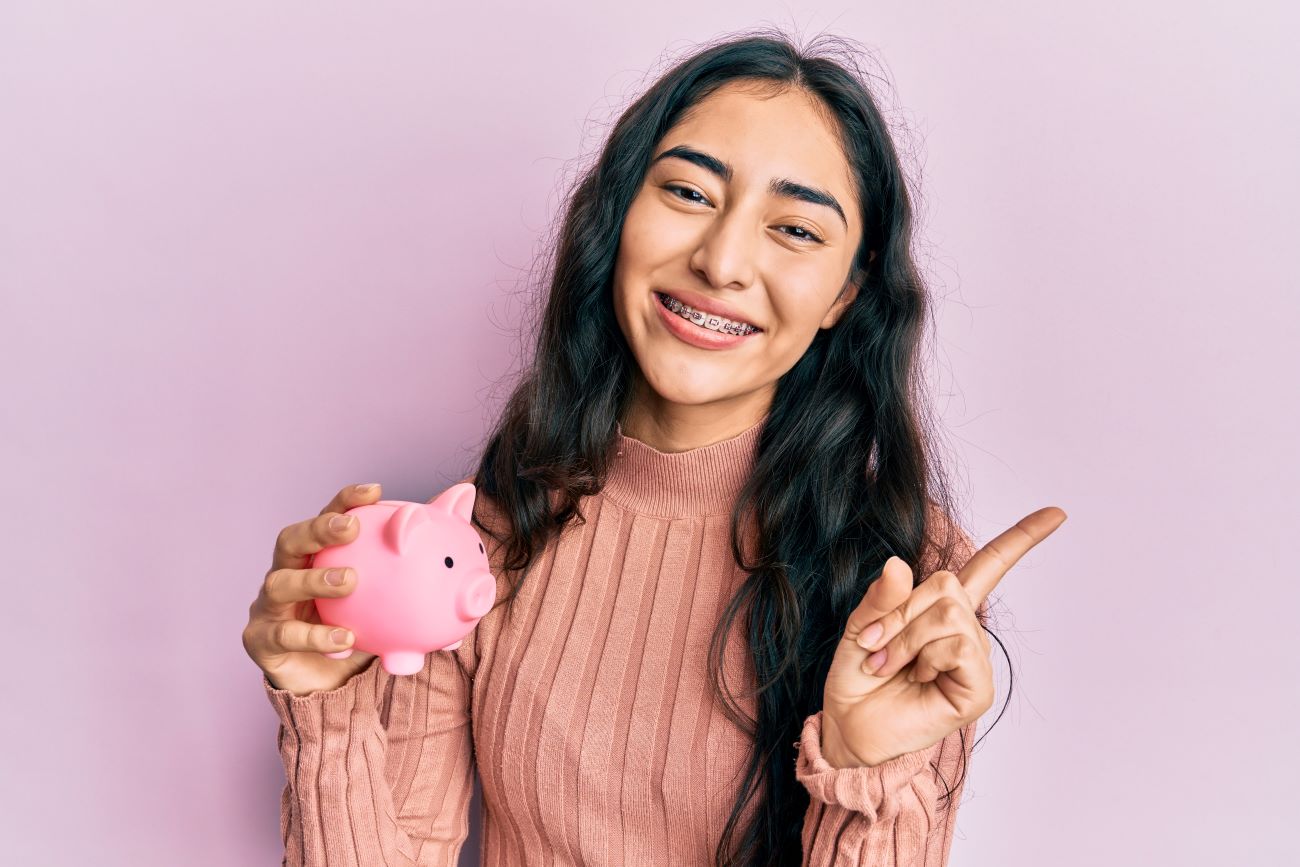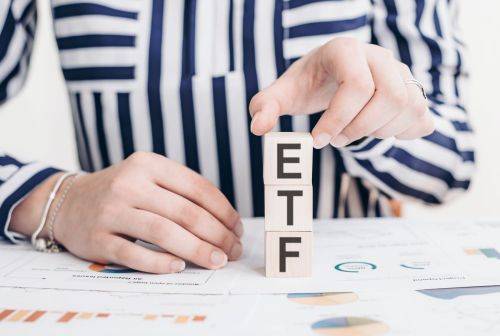What is Risk Tolerance? A Guide for Parents & Teens

Perhaps your teen has an interest in personal finance and is can’t wait to learn about investing. But before even considering what type of investment portfolio might work for them, it’s important to give your kids an understanding of risk tolerance, and how their risk tolerance may be different from yours (or their peers).
This primer can help you speak to your kid about risk tolerance, discover where they fall on the risk tolerance spectrum, and help them make smart decisions about investment risk levels when it’s time to invest their dollars.
Key takeaways
- Risk tolerance refers to how much loss a person is willing to accept in exchange for the potential to make money on their investments.
- Knowing your risk tolerance before you start investing will help you make smart choices.
- There are three main types of risk tolerance: conservative, moderate, and aggressive.
- You should consider your timelines, goals, current financial situation, and personal comfort level when determining risk tolerance.
What is risk tolerance?
Before explaining “risk tolerance” to your kid, be sure to define “risk” itself. Very broadly, risk is the possibility that something bad might happen, and it applies to many scenarios—whether you’re in a car, riding a roller coaster, or investing money.
Risk tolerance refers to the amount of risk a person is willing to tolerate in a given situation. If the thought of risk makes your kid squeamish (like riding the steepest roller coaster), they have a low risk tolerance. If they don’t even bat an eye in a risky situation, they may have a higher risk tolerance. This isn’t to say lifestyle risk tolerance and financial risk tolerance are the same for everyone. What your kid does day to day could be the opposite of how they invest, and vice versa. The same kid who thinks bungee jumping sounds “cool” might prefer to lock their money away in a guaranteed investment certificate (GIC).

What does low risk tolerance mean for investing?
When you (or your kid) invest, the hope is that your investments will earn you more money. That’s the whole point! But there is always a risk that money could be lost instead (except with a GIC; provided the investment is left to mature, the returns are guaranteed). Having a low risk tolerance means you can’t stomach the thought of major stock market swings or watching your investments lose value. You’d rather stick with low-risk investments that almost guarantee small gains, but also have less potential to make larger amounts of money.
The low risk tolerance motto: “I like to feel safe and secure.”
What does high risk tolerance mean for investing?
If your kid has a high risk tolerance, that means they’re able to tolerate the ups and downs of the market and will be more likely to make high-risk investments. This type of investing could give your teen a better chance of gaining wealth, but they may also see their investments lose value with changes in the market.
The high risk tolerance motto: “No risk, no reward.”
Feel like you need a quick investment refresher? This rundown of basic investing terms can help.
How is risk tolerance different from risk capacity?
Risk tolerance and risk capacity go together when it comes to creating a financial portfolio. Risk tolerance is tied to one’s individual personality and beliefs, and typically doesn’t change much throughout life.
Risk capacity, on the other hand, is the amount of risk a person’s financial situation can handle. This is a measurable, mathematical number that may fluctuate over the years. Someone with many financial obligations (e.g., a mortgage and several kids) or less time to invest to reach their goals (e.g., they’re close to retirement) will have less capacity for risk, even if they have a high personal risk tolerance. Kids and teens tend to have a high risk capacity because they have no financial obligations, and time is on their side.
Why is risk tolerance important when investing?
Before your kid even thinks about investing, it’s key to get a grasp of their risk tolerance (and risk capacity), so they can make strategic choices about the types of investment products they’ll want to purchase.
- If they develop an investment portfolio that’s too risky for their tolerance: they might end up panicking if a stock’s value drops, selling too early because they feel so stressed, and ultimately losing money.
- If they develop a portfolio that’s not risky enough for their tolerance: they might not reach their financial goals.
Some financial advisors even have their clients take risk tolerance questionnaires before making any recommendations.
Types of risk tolerance
Risk tolerance can be broken into three main categories: conservative, moderate, and aggressive. (Some experts will break down the mix even further, with additional categories like moderately conservative and moderately aggressive, but the three main types are a good starting point.)
If you and your kid are choosing a category to guide their investment choices, you should think about their personal appetite for risk as well as their risk capacity.
Conservative
A conservative investor has a low risk tolerance and usually gets nervous if their investments temporarily lose value. They’re focused on preserving their money and will settle for a lower return on their investments (meaning their investments will only grow slowly and in small amounts) if they can avoid huge fluctuations in value.
If your tween or teen has a conservative risk tolerance, they’re better off putting the majority of their funds in low-risk investments, such as high-interest savings accounts, corporate bonds, or guaranteed investment certificates (a.k.a. GICs, where they’ll gain interest on money that they lock into a savings account for a specified period of time).
Moderate
A moderate investor bridges the gap between aggressive and conservative, taking strategy notes from each side. They value both goals equally—growing wealth and minimizing risk—so they will accept some risk for the chance to make money.
If your child has a moderate risk tolerance, they may opt for a 60:40 split of their portfolio, with 60 per cent going to stocks (for growth) and 40 per cent going to bonds (for stability).
Aggressive
An aggressive investor has a high tolerance for risk and won’t get too stressed if they see their investments lose value. They can accept the risk of potentially losing some money in the short term (or even *gulp* losing their investment altogether) for the chance at a greater return.
If your child has an aggressive risk tolerance, they could create a high-risk portfolio with a large percentage of their investments in stocks. Though the stock market can fluctuate a lot, it typically offers the biggest opportunity for their money to grow over time. They may also have a small portion in bonds, savings accounts, or other types of stable investments.

How to determine your risk tolerance level
When helping your kid figure out the risk tolerance level they’ll use for investing, these factors should come into play:
Timeline
If your teen is 18 years old and starting early on their retirement savings, for instance, they’ll have plenty of time to grow that nest egg. Your teen can take on more risk because they have more time to recover from losses. However, if they’re saving for university or a trip and need the money next year, their risk tolerance should be lower. The shorter the timeline for growth, the less risk they can afford to take.
Investment goals
Ask your kids to think about what they hope to achieve with their money. Do they dream of retiring at 40 and are banking on major growth? Are they looking for small, steady growth to maintain their assets and keep up with inflation? Everyone invests for different reasons and with different goals in mind, so it’s good for your kids to think about theirs.
Current financial situation
Your kid probably has few financial responsibilities and can likely withstand losses. Since they have you to fall back on, they could afford a higher risk tolerance. The same goes for an adult with no kids, a steady job, and savings already in the bank. On the other hand, a primary breadwinner with a lot of financial responsibilities (a mortgage, plus kids) and little money saved should be more conservative with their investments because they’re less likely to be able to afford to lose large sums.
Emotional ability to handle loss
Have your teen think about a few worst-case scenarios—like their stocks losing 10 per cent, 20 per cent, or 30 per cent of their value. Will they lose sleep? Will they feel so stressed they’ll pull out all of their investments and potentially lose money in the long run? If they would immediately sell their stocks out of fear of losing more money, they’re probably conservative investors. If they would be willing to wait a few months (or years) and then reassess, they’re likely moderate investors. And if your kid isn’t phased by the ups and downs of investing, they probably fall into the aggressive investor category.
Risk tolerance can (and should!) have a big impact on how your kids invest their money, so it’s important for them to figure out whether they’re conservative, moderate, or aggressive with money before making any big decisions. Where they fall can help your kids decide how risky of an investment portfolio they can tolerate—and what types of investments will work for them—once it’s time to invest. This simple guide to investing can help to set you both on the right path.
General financial literacy is also an important skill for kids and teens to develop—and that’s where Mydoh comes in. The Mydoh app creates a fun environment for kids to learn to track their earnings and spending, get comfortable with money basics, and complete tasks set by you. And you can track it all through your parent account to help set up your kids for financial success in the future.
Download Mydoh and help build the foundation of financial literacy for your kids and teenagers.
This article offers general information only and is not intended as legal, financial or other professional advice. A professional advisor should be consulted regarding your specific situation. While the information presented is believed to be factual and current, its accuracy is not guaranteed and it should not be regarded as a complete analysis of the subjects discussed. All expressions of opinion reflect the judgment of the author(s) as of the date of publication and are subject to change. No endorsement of any third parties or their advice, opinions, information, products or services is expressly given or implied by Royal Bank of Canada or its affiliates.














